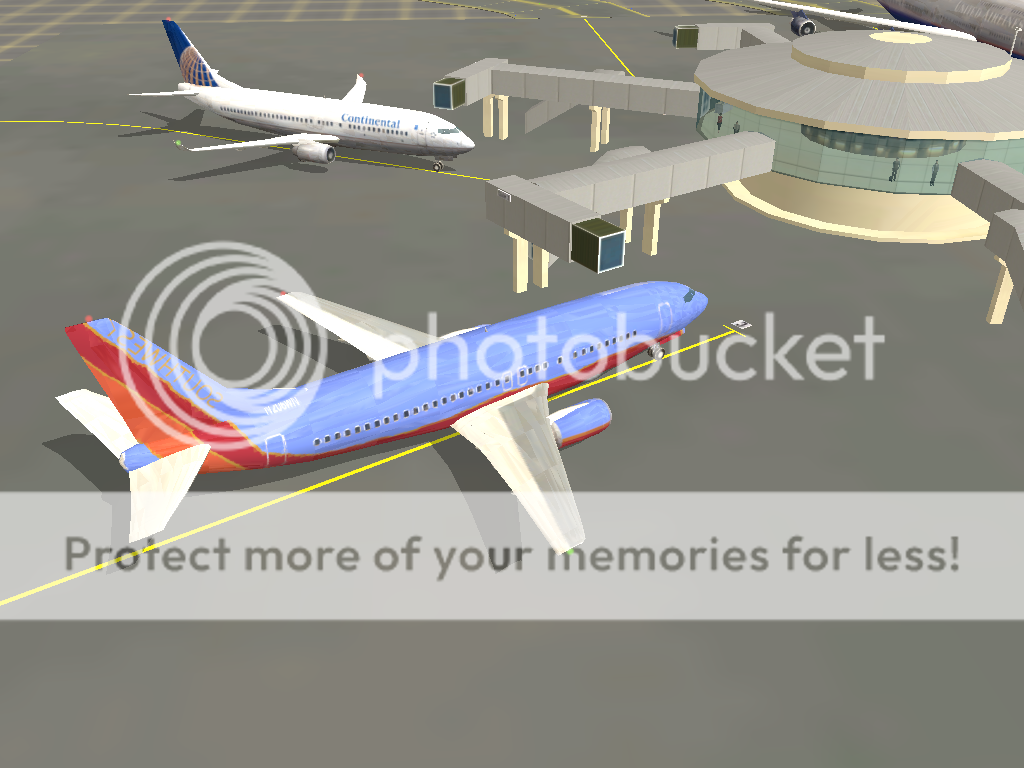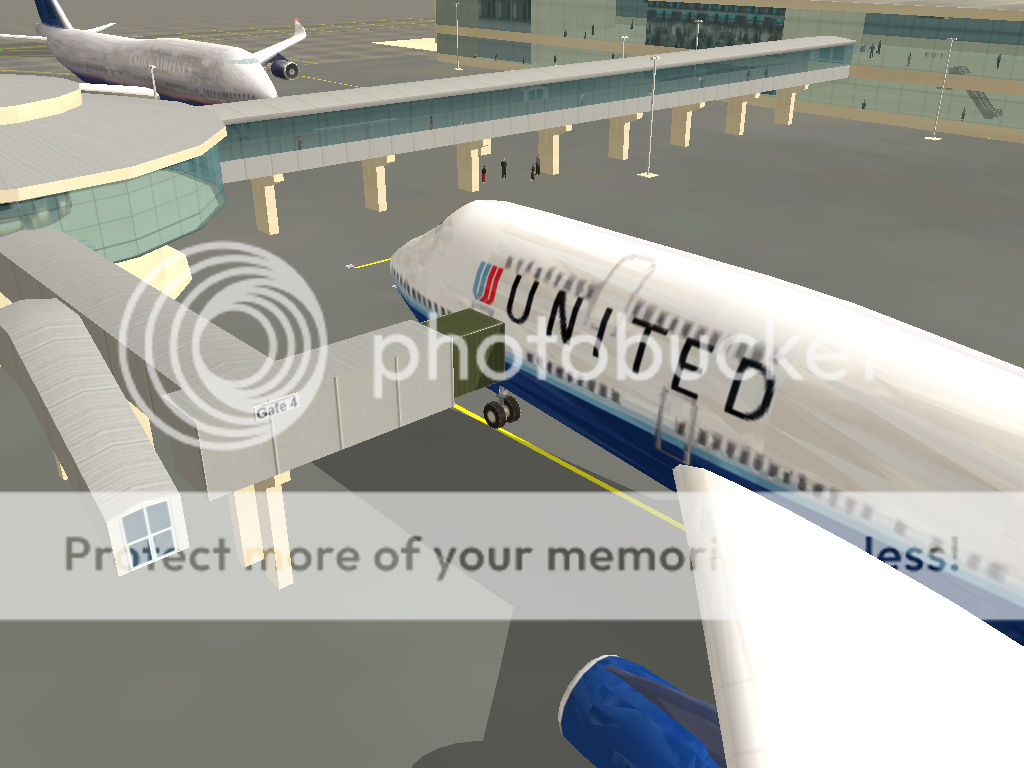Hi John, some basics, though there are many ways to achieve the result you would like.
I have experimented with a number of positions of attachment points depending on the aircraft type and use.
1. In constructing the tail lifters like the Tiger Moth, It is best to make the model with the fuselage horizontal, then when it is finished you can rotate it to the correct angle at rest, usually 5 degrees, the boomerang if I recall is 10 degrees. If you find you have to make changes to the mesh after that, it can be difficult, because the model is not parallel to the axis in 3dsmax any more. You can rotate it back to horizontal, do the changes and then set the correct angle again.
It is best to have the bogeys near the wheels, so they follow the track, otherwise they plane drifts sideways and can look unrealistic when taxiing. Remember the bogeys are invisible so placement is not critical for visual appearance. Bogeys have to be on opposite sides of the origin. You cannot place the a.limpoints on top of bogeys, or the plane is unstable and will derail as soon as placed on the track.
There is some obscure relationship between the bogey position, the origin and the limpoints, you experiment until it becomes unstable, especially if you push a plane around a curve. Long wheelbases also will not traverse sharp curves.
2. This is the placement for the Tiger Moth, you can see the a.limback is way behind the tail, so any aircraft coupling there will look like it is flying in formation, not chewing up a tail with the prop.

I have placed the a.bog0 as close as I can to the origin, as the tail lifts, the plane rotates about the origin and the wheels dig in a bit so close is best. Note that the wheels are about 0.2 to 0.3m below the origin, this sits reasonably well with the default bogey height (I use about 0.5m bogey height) and negates the Auran 0.3 raised rail height for normal train track. Play with the settings, allowing for the rotation effects.
3. Since the Tiger, I have found for tail lifters, it is better to leave the fuselage horizontal in 3dsmax. I now make the default mesh an invisible box. The aircraft is than attached to the default model using the config file, with an attachment point that is placed on the origin. If I want the attitude to be 5 degrees at the start, I rotate the attachment point -5 degrees. This rotates the main mesh correctly and sets the correct take off attitude in Trainz, a lot simpler.
4. For aircraft where you need to move them using the pushback tractor the a.limfront has to be near the front wheel, or the coupling point will drift sideways on curves. The bogey has to be as close as possible to the wheel as well. This often places the front coupling point well under the nose, as in the Concorde. The pushback tractor uses a third bogey on the push arm, there is a new config tag that allows that bogey to follow the track centreline. Even so, it is impossible to get the alignment correct with the nose wheel on sharp curves.

The rear lim point is well back from the tail. Most of my aircraft do sit a little high, I thought that better than having them all dig in their wheels. The height is noticeable where a shadow is used on model, as required by TS2010. Shadows are a pain as they cannot be animated to follow any wing shape changes. You will find a lot of compromises in trying to make aircraft models, pushing the boundaries.
Ian
I have experimented with a number of positions of attachment points depending on the aircraft type and use.
1. In constructing the tail lifters like the Tiger Moth, It is best to make the model with the fuselage horizontal, then when it is finished you can rotate it to the correct angle at rest, usually 5 degrees, the boomerang if I recall is 10 degrees. If you find you have to make changes to the mesh after that, it can be difficult, because the model is not parallel to the axis in 3dsmax any more. You can rotate it back to horizontal, do the changes and then set the correct angle again.
It is best to have the bogeys near the wheels, so they follow the track, otherwise they plane drifts sideways and can look unrealistic when taxiing. Remember the bogeys are invisible so placement is not critical for visual appearance. Bogeys have to be on opposite sides of the origin. You cannot place the a.limpoints on top of bogeys, or the plane is unstable and will derail as soon as placed on the track.
There is some obscure relationship between the bogey position, the origin and the limpoints, you experiment until it becomes unstable, especially if you push a plane around a curve. Long wheelbases also will not traverse sharp curves.
2. This is the placement for the Tiger Moth, you can see the a.limback is way behind the tail, so any aircraft coupling there will look like it is flying in formation, not chewing up a tail with the prop.

I have placed the a.bog0 as close as I can to the origin, as the tail lifts, the plane rotates about the origin and the wheels dig in a bit so close is best. Note that the wheels are about 0.2 to 0.3m below the origin, this sits reasonably well with the default bogey height (I use about 0.5m bogey height) and negates the Auran 0.3 raised rail height for normal train track. Play with the settings, allowing for the rotation effects.
3. Since the Tiger, I have found for tail lifters, it is better to leave the fuselage horizontal in 3dsmax. I now make the default mesh an invisible box. The aircraft is than attached to the default model using the config file, with an attachment point that is placed on the origin. If I want the attitude to be 5 degrees at the start, I rotate the attachment point -5 degrees. This rotates the main mesh correctly and sets the correct take off attitude in Trainz, a lot simpler.
4. For aircraft where you need to move them using the pushback tractor the a.limfront has to be near the front wheel, or the coupling point will drift sideways on curves. The bogey has to be as close as possible to the wheel as well. This often places the front coupling point well under the nose, as in the Concorde. The pushback tractor uses a third bogey on the push arm, there is a new config tag that allows that bogey to follow the track centreline. Even so, it is impossible to get the alignment correct with the nose wheel on sharp curves.

The rear lim point is well back from the tail. Most of my aircraft do sit a little high, I thought that better than having them all dig in their wheels. The height is noticeable where a shadow is used on model, as required by TS2010. Shadows are a pain as they cannot be animated to follow any wing shape changes. You will find a lot of compromises in trying to make aircraft models, pushing the boundaries.
Ian
Last edited:











